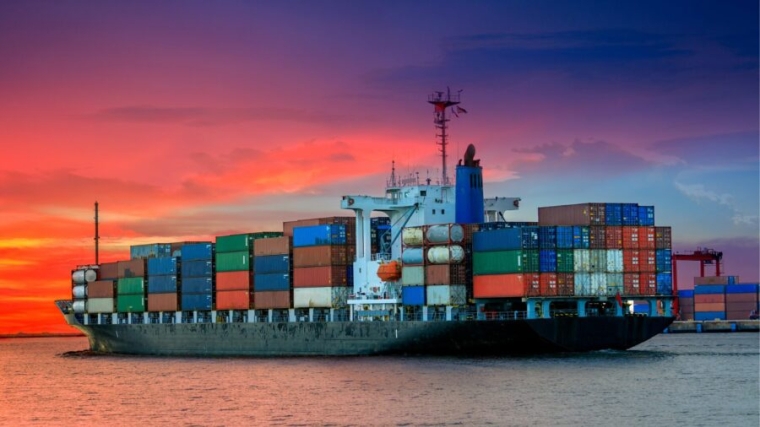
This content is supplied by Rabobank.
Trade logistics are set to once again become increasingly challenging for New Zealand’s agricultural sector with the escalating tensions in the Red Sea disrupting global trade, according to agribusiness banking specialist Rabobank.
However, there are also potential upsides for the nation’s export competitiveness into the Asian market, the bank said.
RaboResearch general manager Stefan Vogel said ocean shipping companies are now diverting more vessels away from the Suez Canal to avoid attacks by Houthi militants and the escalating military action against them in the Red Sea.
“New Zealand may have to deal with some increased costs for imported goods – such as day-to-day household articles and agricultural inputs including certain fertilisers, ag chemicals and machinery parts – as importers face higher freight costs, as a result of diverting around the canal and impacted areas. However, the elevated freight costs are not expected to reach the Covid-related highs seen in 2021,” he said.
“Globally, for containerised and bulk goods, the shipping industry has to make tough decisions at the moment – either to navigate the Suez Canal and risk severe attacks by Iran-backed Houthi rebels or to take a nine to 15-day detour around Africa’s Cape of Good Hope.
“Every vessel that’s longer at sea is slower to load their next cargo and that’s limiting the available shipping capacity and driving freight costs up.
“Initial attacks by the Houthi on cargo ships caused bulk freight rates for vessels used also to transport fertilisers, to spike in December, though these have now settled back closer to 2023 average prices.”
Mr Vogel said the impact of the Suez/Red Sea crisis on agricultural fertiliser and other farm input imports is likely to be mixed.
“Fertilisers used on farm in New Zealand are largely imported or rely on imported raw materials. And, at least for nitrogen and compound fertiliser supplies, they should not be impacted much as they mostly derive from Asia and the Middle East and don’t pass through the Suez Canal,” he said.
“Phosphate Rock, however, stems to a significant share from Morocco. And Potash, largely comes to New Zealand from North America and Europe and some of those shipments could be impacted by the attacks and re-routing of vessels.”
Containerised shipments – both to and from New Zealand – will also be affected, Mr Vogel said. “And this is likely to have time and cost impacts on plant protection chemicals and machinery parts coming into New Zealand as well as New Zealand’s dairy and meat exports,” he said.
“During the 2021 freight crisis, New Zealand struggled sometimes to find sufficient containers for exports as shipping companies gave preference to their major global routes and somewhat neglected Oceania or they tried to quickly take empty containers back from New Zealand to China rather than adding in shipping time to export New Zealand goods. And a similar struggle for containers could materialise again if the Red Sea issues tighten global container freight capacity further.”
The FBX global ocean freight container index has more than doubled from early December to mid-January to reach the highest price level seen since October 2022, Rabobank said.
“The good news is container freight rates at the moment are still three to four times below the massively Covid-inflated levels of 2021,” Mr Vogel said.
“Imported goods into New Zealand will have to bear the higher freight costs, but container freight is unlikely to get as expensive as in 2021.”
Mr Vogel said a potential upside for New Zealand of the Red Sea tensions, was increased export competitiveness into the Asian market.
“Several of New Zealand’s key agricultural export competitors usually ship products into Asia through the Red Sea, and if tensions in the area remain heightened, they may be forced to divert more of their product into Asia via the longer and more costly route around Africa.”
RaboResearch global economic strategist Michael Every said while “things aren’t as bad as the last shipping crisis, they could still get painful if the Suez/Red Sea crisis is not resolved soon”. And total container transits and tonnage via the Suez Canal have now slumped to Covid-era lows, he said.
“Helpfully, ocean carriers have added 11 per cent container ship dead weight tonnage capacity since Covid,” Mr Every said. More broadly though, he said, the current “Red Sea/Suez crisis, on top of the ongoing Black Sea/Ukraine crisis and the risk of others to follow, provides a fat tail risk of potential fresh waves of inflationary supply shocks for western economies and financial markets, which are currently predicting nothing but easing price pressures and large rate cuts in 2024.
6 Comments
The year is 202. NZ is largely uninhabited by humans. All is well. Buy a house.
(There's a typo in the heading)
Time to invest in Chatham Rock Phosphate perhaps. Shares have ben languishing for years. Approval under this govt must be more likely.
Add in the Panama ingredient & we have all the necessaries needed for a comprehensive global trade downturn.
Presumably it is longer because most of our freight is routed via Singapore.
If you went around Cape Horn , and stuck south across below Australia , its actually shorter.
I doubt much freight comes to NZ via Suez. Italian tractors perhaps ?
A world shipping map. Surprisingly doesnt show a lot through the canal ,i don't know if this is volume or just routes.

We welcome your comments below. If you are not already registered, please register to comment
Remember we welcome robust, respectful and insightful debate. We don't welcome abusive or defamatory comments and will de-register those repeatedly making such comments. Our current comment policy is here.